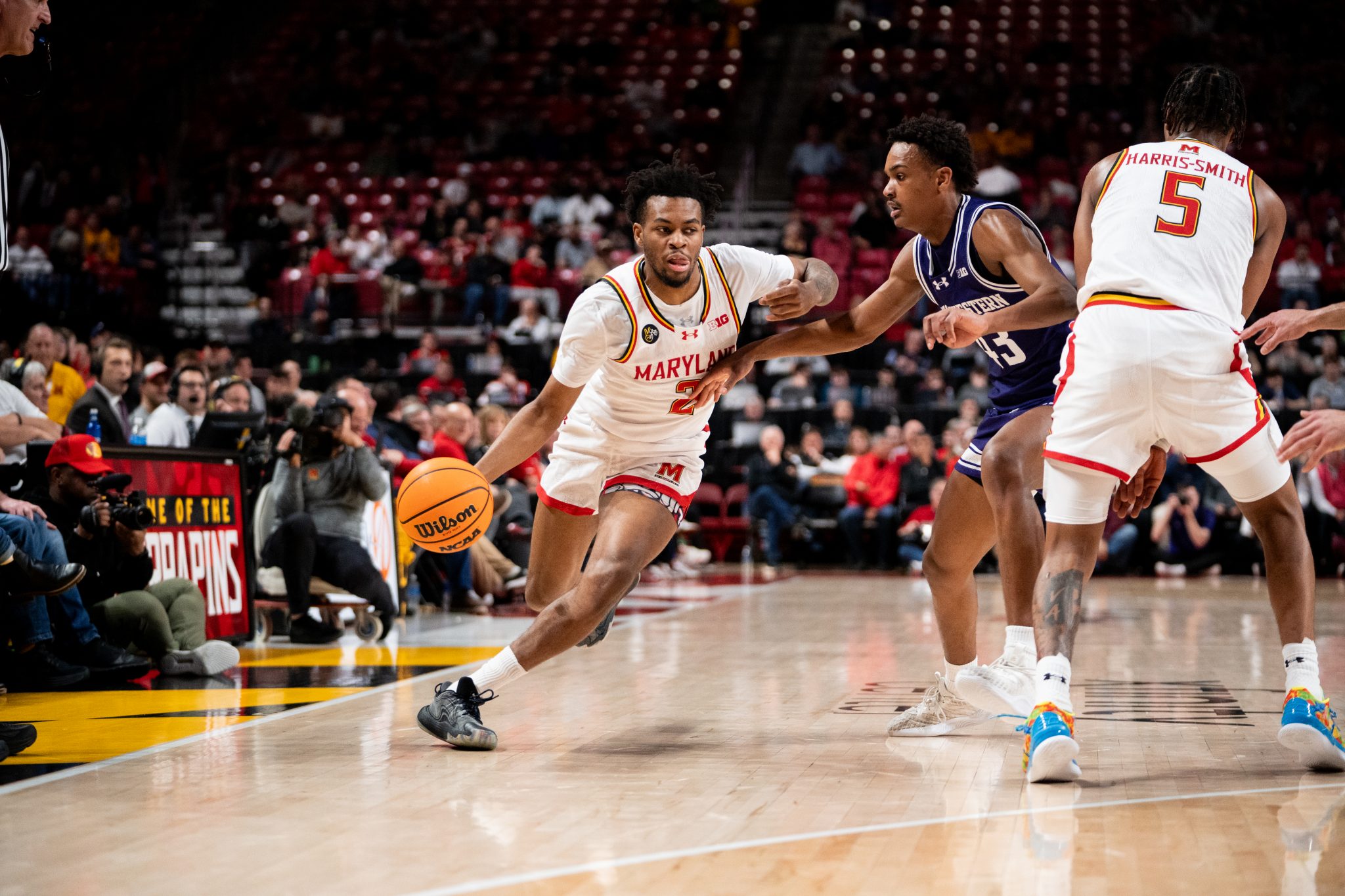By: Harrison Rich and Eli Cohen
Maryland men’s basketball’s season begins Monday with hopes to rebound from just its second losing season in about 30 years.
Men’s basketball beat reporters Eli Cohen and Harrison Rich answered fans’ questions ahead of the Terps’ season-opener against Manhattan. Questions have been edited for length and clarity.
What are the expectations for the season? Can Maryland make it back to March Madness?
Harrison: I think it’s fair to predict the Terps will at least be in the conversation for the Big Dance once March rolls around.
Maryland kept its best returners in Julian Reese and DeShawn Harris-Smith, and added impact transfers and five-star freshman Derik Queen. Maryland’s roster is more experienced than last year’s with more offensive versatility.
But the Terps lost Jahmir Young, who scored nearly 30 percent of their points last season, and hope to establish a new offensive identity. It could take time for Maryland to find its groove.
What players look like they are going to factor into the Terps’ rotation to start the season?
Eli: It’d be surprising if the starting lineup wasn’t Gillespie, Miguel, Harris-Smith, Queen and Reese.
The only other rotation guarantees are guard Rodney Rice and forward Jordan Geronimo. Rice, a Virginia Tech transfer, has only played eight collegiate games but was a highly touted recruit and could provide the shot-creation Maryland desperately needed. Geronimo was a starter on last year’s team and a major part of the Terps’ defensive success.
[Maryland men’s basketball transfer Ja’Kobi Gillespie follows a star at the same position]
It’s tricky beyond that. Teams rarely run more than nine players in a rotation, leaving two spots for six scholarship players.
Guard Jahari Long will likely miss significant time this season as he comes off an injury, and coach Kevin Willard said fans should be patient with sharpshooter Chance Stephens.
Guards Malachi Palmer and Jayhlon Young, forward Tafara Gapare and center Braden Pierce are the remaining options. Any combination of the four would be understandable.
Palmer has drawn buzz from the coaching staff, but it’s rare for true freshmen to receive considerable minutes. Young could play back-up point guard and is known as a strong defender, but hasn’t been as successful offensively. Gapare could play a similar role as Geronimo with his length and athleticism. Pierce redshirted last year and hasn’t played a collegiate game, but could be valuable as a floor-spacing big.
Willard said he wants to be top 25 in both offensive and defensive efficiency by the end of the year. Do you think Maryland’s offense can produce at that level with this new core?
Harrison: Willard said at media day in October that his goal every year is to finish top 25 in KenPom’s adjusted offensive and defensive efficiency metrics. I don’t think that’s a realistic outcome this season.
Maryland definitely has a chance to finish in that range on defense. The Terps ended last season with KenPom’s 14th best defensive rating, largely thanks to Reese’s elite rim protection. Fellow projected starters Harris-Smith, Miguel and Gillespie also have the potential to be positive contributors on that end.
Offense is a different story. Maryland finished with a 107.3 adjusted offensive efficiency last season, its worst rating since 2013 and ranked 155 nationally. The Terps’ efficiency rating in Willard’s first season was 113.5, good for 36th in the country. Willard has only finished as a top-25 KenPom offense once in his coaching career.
I think Maryland’s offense performs substantially better than last season — the shooting shouldn’t remain historically bad — but not enough to reach the level of Willard’s first season in College Park.
[Polling Maryland men’s basketball assistant coaches ahead of 2024-25 season]
The Terps added some shooting in the portal, but does it seem like enough to improve on last year’s poor numbers by a meaningful margin without additional improvements from returning players?
Harrison: Maryland addressed its shooting woes enough that it won’t repeat as one of the worst high major 3-point shooting teams, but it still has notable spacing concerns.
Harris-Smith, Queen and Reese are all below average or non-shooters. When Queen and Reese sit, they’ll likely sub in Geronimo or Gapare, two high-flying forwards who have struggled to shoot from deep in their careers.
It would benefit the Terps if Harris-Smith or Geronimo became 30-plus percent shooters. I just don’t know how plausible that is.
Instead, they’ll rely on the catch-and-shoot abilities of Miguel, Gillespie, Rice and Young, most likely with multiple of those players on the floor at a given time. They could also run small ball lineups that enhance the team’s spacing.
Has there been any indication on how much Reese and Queen will play together in the rotation and how that could affect Maryland’s offense and defense?
Eli: Willard previously said he expects the two to share the court for 12 to 15 minutes a game.
Offensively, one will likely spend time up top setting screens and running dribble handoffs with the guards. Either are capable of that, though Queen may be better suited with his passing abilities. The biggest concern is spacing, but regardless, it’ll be tough for teams to match up with.
“[If] someone had to put a four man on Derik, [or] someone’s got to put a four man on [Reese], I just wouldn’t want to be that four man,” Willard said.
Defensively, Willard’s biggest concern is in transition. But there’ll also be differences in the half-court. Power forwards play vastly different roles than centers in Willard’s system, having to switch onto the perimeter whereas the center will stay in the paint.
“We feel comfortable with either one of them switching and being able to contain the basketball [for] one or two bounces,” associate head coach David Cox said. “Three or four bounces is probably not going to happen when you’ve got a smaller guy.”



